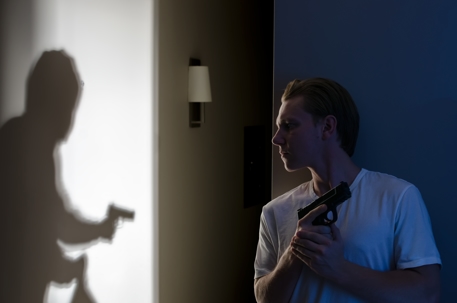Self-defense laws can be complex and, unfortunately, misunderstood. If you find yourself in a situation where you're forced to defend yourself or your loved ones, understanding the legal framework in your state is crucial. This is particularly true in Minnesota, where the “Duty to Retreat” law plays a significant role in determining whether your actions are legally justified.
What Is the "Duty to Retreat" Law?
The “Duty to Retreat” is a legal principle that requires individuals to avoid using deadly force, if it is possible to do so safely, before acting in self-defense. Essentially, if you’re attacked, the law mandates that you assess whether you can safely remove yourself from the situation before resorting to force that could potentially harm or kill another person.
Minnesota follows this principle, setting itself apart from states with "Stand Your Ground" laws. While some states allow individuals to use deadly force without requiring them to retreat if they feel threatened, Minnesota's law imposes a higher standard of responsibility on individuals to de-escalate and avoid violence whenever possible.
Breaking Down the Key Elements
1. Reasonable Perception of Danger
The law recognizes your right to defend yourself, but only if you genuinely believe you're in imminent danger. However, the belief must be reasonable. A general sense of unease won't justify resorting to force.
2. Safety of Retreat
The duty to retreat applies only if it’s safe to do so. If you're cornered or retreating would increase your risk, you may be justified in using force immediately.
3. Proportional Force
Any defensive action must be proportional to the threat. This means you can't use deadly force unless the threat to your life or safety is equally severe. For example, if someone shoves you, grabbing a weapon would likely exceed what the law considers reasonable.
4. Location Matters
Minnesota’s “Duty to Retreat” law generally applies to public spaces. However, when you're in your home, the "Castle Doctrine" may come into play, which allows you to defend yourself without retreating, under specific circumstances.
Why Does Minnesota Use This Approach?
The primary goal of the “Duty to Retreat” law is to encourage de-escalation and minimize harm. By mandating retreat when it’s safe, the law tries to prevent potentially fatal confrontations and promotes the idea that violence should only be a last resort.
The state’s stance reflects a belief in balancing personal security with public safety. While you have the right to protect yourself, the law also aims to discourage unnecessary violence.
Examples of the “Duty to Retreat” in Practice
To better understand Minnesota's law, consider these scenarios:
Scenario #1
You’re walking in a park when someone aggressively approaches you, but they remain at a distance. There's a clear path for you to walk away. Under the “Duty to Retreat” law, you are required to take that escape route instead of engaging in any physical confrontation.
Scenario #2
You’re in a confined space, like an elevator, and someone grabs you, threatening harm. With no means of safely retreating, the law allows you to defend yourself, as retreat isn’t a viable option.
Scenario #3
You’re at home, and an intruder breaks in during the night. Depending on the circumstances, Minnesota's "Castle Doctrine" might apply, allowing you to use force without a duty to retreat. However, careful evaluation of the situation is still critical.
What Happens in Court?
If you're involved in a self-defense case, the court will closely analyze whether your actions were legally justified. Prosecutors may scrutinize:
- Your actions prior to the incident
Did you escalate the situation in any way? Could you have avoided the confrontation entirely?
- Opportunities to retreat
Was retreat safely possible? Did you fail to take a clear escape route?
- Your use of force
Was your response appropriate to the perceived threat?
Each case is unique, and the court will consider the totality of circumstances. That’s why working with an experienced attorney is crucial if you're facing legal challenges related to self-defense.
Practical Tips If You Find Yourself in a Self-Defense Situation
To stay on the right side of the law, here are a few things to keep in mind:
1. Prioritize De-Escalation
If you can resolve a confrontation through calm words or by walking away, do it. Avoiding violence not only keeps you safe but also limits your legal exposure.
2. Be Aware of Your Surroundings
Having an escape route in mind can make retreating easier if a conflict arises. Whether you’re in a public space or your home, plan for potential emergencies.
3. Know the Law
Understanding Minnesota’s rules on self-defense, including the “Duty to Retreat,” empowers you to make informed decisions. Educate yourself now so you’re prepared if the unthinkable happens.
4. Document What Happened
If you're involved in a self-defense situation, record as much as possible after the fact. Eyewitness statements, photos, videos, and written accounts can help support your case.
5. Seek Legal Counsel Immediately
Self-defense cases are highly nuanced. Consulting a lawyer experienced in Minnesota criminal law can help you understand your rights and responsibilities while building a solid defense.
24-Hour Criminal Lawyer Help in Minnesota
At Tamburino Law Group, we are committed to providing expert legal counsel tailored to individual self-defense cases involving the "duty to retreat" in Minnesota. If you're facing legal challenges or require guidance on self-defense law, our experienced team in Minneapolis is here to help. Understanding the specific nuances of local statutes can be pivotal. Contact us today at (612) 444-5020 to safeguard your rights and ensure robust representation in your legal matters.




.2407131209550.png)





